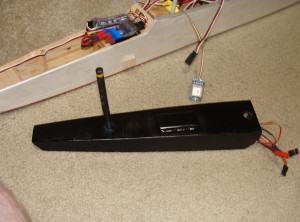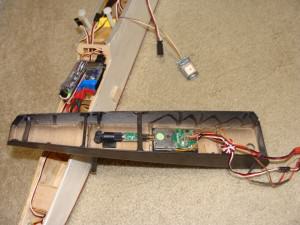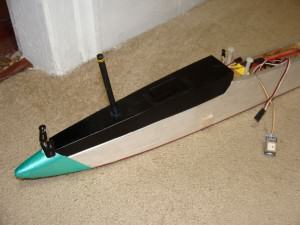Last week I test flew the glider. As you can see in the previous post “FPV Spirit 100 Inch Brushless Powered Glider Test Flights“, it flew pretty good. The glider weighed in at 1990 grams with the radio, speed controller, motor, motor mast and battery (and other associated equipment). I had to add 136 grams of lead at the tip of the nose to bring it within CG balance.
I spent some time this weekend working on the glider to do the final conversions steps for First Person View flying use. I ditched the old canopy, it was almost 100 grams by itself and while it looked nice, the plastic pilot, plastic lid and canopy frame were getting in the way of mounting equipment and they were old and starting to crack. I made a new canopy for the glider out of some 3/32″ balsa and 3/16” balsa.
The new canopy only weighs around 60 grams so I saved a little weight there which is an important consideration when it comes time to balance the whole plane out again. I’ll be removing the lead weights in the nose which will gain me 136 grams, and by replacing the canopy I saved another 40 grams, so that gives me about 176- so far on the conversion (not counting the addition of the FPV equipment).
In the fuselage itself I built a platform above the elevator and rudder servo to support the Eagle Tree eLogger v3 and the OSD Pro, a servo line runs up to the front of the fuse which is the video line and the camera mount is secured to the nose of the aircraft. I also made a bay that the battery will fit in, and a smaller platform up front for the GPS. I am going to mount the barometric altimeter on the underside of the new canopy so that the numbers show through from the top and I may consider trying the barometric airspeed sensor with pitot tube on this model as well.




Leave a reply to Spirit 100 Glider FPV Conversion Progress – New Canopy